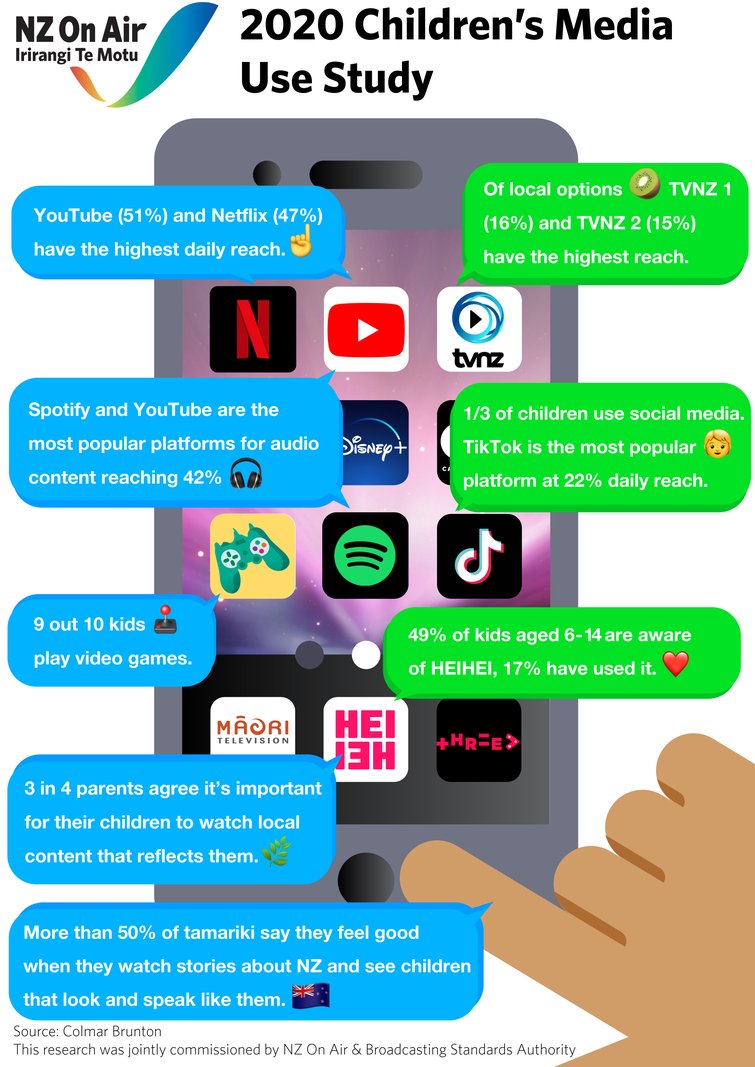Overview
In March 2020 Colmar Brunton, commissioned by NZ On Air and the Broadcasting Standards Authority. carried out a comprehensive survey of more than 1,000 children and their parents about the media consumption behaviour of those children. The survey questioned children under 14 years.
The research is comparable to the last research on this topic in 2014, and shows significant shifts in what children are consuming in media, and where.
NZ On Air funds content for television, radio and online audiences. We will go where the audiences are - so having a clear understanding of where they are, and how media consumption is changing is important to our strategy.
The 2020 research will inform a review of our Children's content strategy.
Key Findings
The 2020 survey found that YouTube (51%) and Netflix (47%) now have the highest daily reach and children spend the longest time watching content on these platforms. Of local options TVNZ 1 (16%) and TVNZ 2 (15%) have next highest daily reach.
This is a significant change from 2014, but mirrors the trends seen in our Where Are The Audiences research which surveys people aged 15+.
Cartoons are the most popular genre.
A third of children under 14 years use social media - TikTok, which did not exist in 2014 - is now the most popular social media platform with 22% daily reach.
9 out of 10 children play video games.
Spotify and YouTube are the most popular platforms to access audio content at 42% reach.
Despite the higher consumption of international content the desire for local content is still strong.
- Three quarters of parents agree it’s important for their children to watch local content that reflects them and their world
- More than 50% of children say they feel good when they watch stories about NZ and see children that look and speak like them
But
- Most children (65%) don’t have a favourite NZ-made show
- 49% of children aged 6-14 are aware of HEIHEI and 17% have used it.
However there is a wealth gap - children in low income households have significantly less access to a range of media devices. For these children free-to-air television is still important.
Read the full report below.
